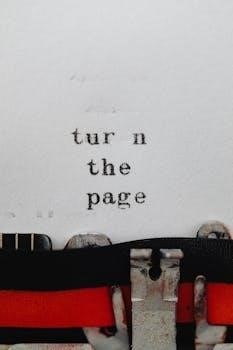Sadako and the Thousand Paper Cranes⁚ Article Plan
This article will cover the availability of “Sadako and the Thousand Paper Cranes” in PDF format, allowing easy access to Eleanor Coerr’s poignant book. Online versions cater to educational fair use, ideal for classroom activities and reading.
Overview of Sadako Sasaki’s Story
Sadako Sasaki’s story, immortalized in “Sadako and the Thousand Paper Cranes” by Eleanor Coerr, is a poignant narrative of a young girl’s resilience in the face of tragedy. Born in Hiroshima, Japan, Sadako was a vibrant and athletic child.

At the tender age of two, she survived the atomic bombing, unknowingly carrying its devastating effects within her. Years later, she developed leukemia, often referred to as “atom bomb disease.” While hospitalized, her friend Chizuko shared the legend of the thousand paper cranes, promising that folding this many would grant a wish. Driven by hope, Sadako embarked on this paper-folding journey, her determination fueled by the desire for recovery.
Her story embodies courage, perseverance, and a profound message of peace. Although she didn’t reach the thousand-crane mark, her classmates completed the task in her honor. Sadako’s legacy lives on through the Children’s Peace Monument in Hiroshima, adorned with countless paper cranes, symbolizing the hope for a world free from nuclear weapons and a testament to her enduring spirit. Her tale continues to inspire countless individuals globally.
The Atomic Bombing of Hiroshima and its Impact on Sadako

On August 6, 1945, the atomic bomb was dropped on Hiroshima, forever altering the course of history and profoundly impacting the life of young Sadako Sasaki. At just two years old, Sadako survived the immediate blast, but the invisible radiation would cast a long shadow over her future. The devastation was widespread, claiming the lives of many neighbors and leaving the city in ruins.
In the years following the bombing, Sadako grew up seemingly healthy, excelling in athletics and enjoying a normal childhood. However, the latent effects of the radiation exposure began to manifest when she was eleven years old. She developed leukemia, a disease tragically linked to the atomic bombing and known as “atom bomb disease.” This diagnosis marked a turning point in Sadako’s life, transforming her from an active schoolgirl into a patient facing a daunting battle.
The bombing not only caused immediate destruction but also sowed the seeds of long-term suffering and health problems for survivors like Sadako, highlighting the enduring consequences of nuclear warfare. Her story serves as a stark reminder of the human cost of such events.
Sadako’s Diagnosis and the Legend of the Thousand Paper Cranes
Sadako’s active life took an unforeseen turn when, at the age of eleven, she was diagnosed with leukemia. This devastating news came as a cruel reminder of the lingering effects of the atomic bomb that had struck Hiroshima years earlier. While hospitalized, facing an uncertain future, Sadako received a visit from her dear friend, Chizuko Hamada. Chizuko brought with her a golden piece of origami paper, which she skillfully folded into a paper crane.
Chizuko shared an ancient Japanese legend with Sadako⁚ it was believed that if a sick person folded one thousand paper cranes, the gods would grant them their wish and restore their health. Inspired by this tale of hope and healing, Sadako embarked on a mission to fold one thousand cranes, each fold representing a wish for recovery and a symbol of perseverance.
This legend provided Sadako with a sense of purpose and a tangible goal amidst her illness. The act of folding cranes became a source of comfort, a way to channel her energy, and a symbol of her unwavering spirit in the face of adversity. The legend intertwined with her diagnosis, giving her hope.
The Significance of Paper Cranes in Japanese Culture
In Japanese culture, the crane, or “tsuru,” holds a profound and multifaceted significance. It is deeply interwoven with themes of longevity, happiness, and good fortune. Revered as a mystical and sacred creature, the crane is often depicted in art, literature, and folklore, embodying grace, beauty, and resilience. The elegant form of the crane, with its long neck and flowing wings, has captivated the Japanese imagination for centuries.
Beyond its aesthetic appeal, the crane is a symbol of peace and hope, particularly in the context of the legend of Senbazuru, or one thousand paper cranes. This legend, popularized by the story of Sadako Sasaki, has elevated the paper crane to an international symbol of peace and healing. Folding paper cranes is not merely an artistic activity; it is an act of devotion, a wish for well-being, and a prayer for a harmonious world.
The act of folding one thousand paper cranes, senbazuru, is believed to grant the folder’s most desired wish, often associated with healing or peace. This tradition reflects the Japanese values of patience, perseverance, and the power of collective intention. Each fold represents a heartfelt wish, and the completion of one thousand cranes signifies a profound commitment to realizing that wish.
Sadako’s Crane-Folding Process and Determination
Upon learning the legend of the thousand paper cranes, Sadako Sasaki embarked on a determined journey to fold one thousand cranes, hoping to be granted her wish for recovery from leukemia, a consequence of the atomic bombing; Despite her weakening condition, Sadako approached the task with unwavering resolve and a spirit of hope. She meticulously folded each crane, often using medicine wrappers and any scrap of paper she could find.
Sadako’s crane-folding process was a testament to her resilience and unwavering optimism. Confined to her hospital bed, she transformed ordinary pieces of paper into symbols of hope and healing. With each fold, she poured her heart and soul into the crane, believing in the power of the legend and the possibility of recovery;
Although she initially aimed for one thousand cranes, Sadako’s determination led her to exceed her goal. She continued folding cranes even as her health deteriorated, driven by a desire to spread hope and peace to others affected by the war. Sadako’s crane-folding journey became a symbol of her indomitable spirit, inspiring countless individuals to embrace hope in the face of adversity.
Chizuko’s Role and Support for Sadako
Chizuko Hamamoto, Sadako Sasaki’s close friend, played a crucial role in supporting Sadako throughout her illness and crane-folding journey. Upon learning about Sadako’s diagnosis of leukemia, Chizuko was determined to help her friend in any way she could. She visited Sadako regularly in the hospital, bringing her colorful paper and offering encouragement.
Chizuko introduced Sadako to the legend of the thousand paper cranes, explaining that folding one thousand cranes could grant a wish for recovery. She demonstrated the origami technique, teaching Sadako how to fold the delicate paper birds. Chizuko’s initial gift of paper and her explanation of the legend sparked Sadako’s crane-folding endeavor, providing her with a sense of purpose and hope.

Beyond teaching Sadako how to fold cranes, Chizuko offered unwavering emotional support. She listened to Sadako’s fears and anxieties, providing comfort and reassurance. Chizuko’s presence served as a constant reminder that Sadako was not alone in her struggle, and that her friends and family were there to support her every step of the way. Chizuko’s actions exemplified the power of friendship and the importance of offering compassion and encouragement during times of hardship.
The Children’s Peace Monument in Hiroshima
The Children’s Peace Monument, located in Hiroshima Peace Memorial Park, stands as a powerful symbol of hope and peace, inspired by the story of Sadako Sasaki and the thousand paper cranes. Erected in 1958, the monument commemorates all children who died as a result of the atomic bombing and serves as a reminder of the devastating impact of war on innocent lives.
Atop the monument stands a bronze statue of Sadako holding a golden crane, representing her dream of a world without nuclear weapons. Visitors from around the world bring strings of colorful origami cranes to the monument, symbolizing their wishes for peace and a future free from conflict. These “senbazuru” offerings create a vibrant and moving display, demonstrating the enduring legacy of Sadako’s story and its message of hope.
The monument’s base features inscriptions conveying the desire for peace and the importance of remembering the past. It serves as a gathering place for reflection and remembrance, where people can pay their respects to the victims of the atomic bombing and reaffirm their commitment to building a more peaceful world for future generations. The Children’s Peace Monument embodies Sadako’s spirit of perseverance and serves as a lasting tribute to her dream of a world without war.
The Book’s Themes⁚ Hope, Perseverance, and Peace
“Sadako and the Thousand Paper Cranes” profoundly explores themes of hope, perseverance, and peace, resonating deeply with readers of all ages. Despite facing the devastating reality of her illness caused by the atomic bombing, Sadako maintains an unwavering sense of hope, believing in the legend of the thousand paper cranes and the possibility of recovery. Her determination to fold the cranes, even as her health deteriorates, exemplifies her incredible perseverance.
The story underscores the importance of peace, highlighting the tragic consequences of war and the urgent need for a world free from conflict. Sadako’s innocent dream of healing transforms into a powerful symbol of peace, inspiring others to strive for a more harmonious future. The act of folding paper cranes becomes a collective expression of hope and a plea for an end to violence.
Through Sadako’s journey, the book emphasizes the resilience of the human spirit and the power of hope to overcome adversity. It encourages readers to embrace perseverance in the face of challenges and to actively work towards creating a more peaceful world for themselves and future generations. The themes of hope, perseverance, and peace are intricately woven throughout the narrative, making “Sadako and the Thousand Paper Cranes” a timeless and impactful story.
Availability of “Sadako and the Thousand Paper Cranes” in PDF Format

“Sadako and the Thousand Paper Cranes” is readily available in PDF format, offering convenient access to Eleanor Coerr’s touching story. Many online platforms provide digital versions of the book, catering to various needs and preferences. Some sites offer free access for educational purposes, allowing teachers and students to incorporate the book into their curriculum.
These PDF versions often maintain the original text and illustrations, preserving the integrity of Coerr’s work. They can be easily downloaded and read on various devices, including computers, tablets, and smartphones. This accessibility ensures that the story of Sadako Sasaki and her paper cranes reaches a wide audience.
However, it is crucial to respect copyright laws when accessing and distributing PDF versions of the book. While some platforms offer free access for educational use, others may require a purchase or subscription. Always verify the legality and legitimacy of the source before downloading or sharing the PDF. By ensuring responsible access, we can continue to share Sadako’s story of hope, perseverance, and peace with future generations. The availability of “Sadako and the Thousand Paper Cranes” in PDF format makes it easier than ever to experience this impactful tale.
